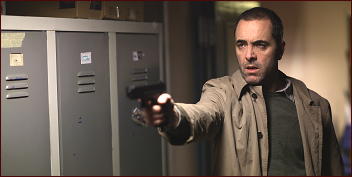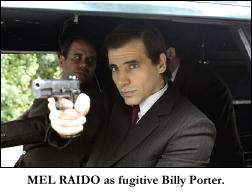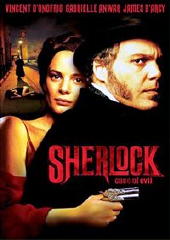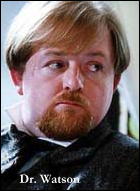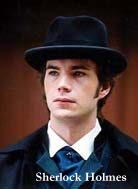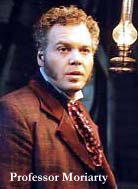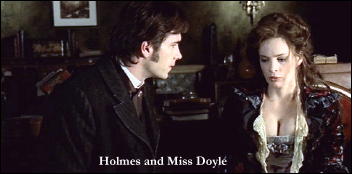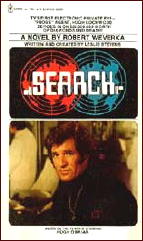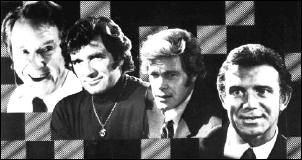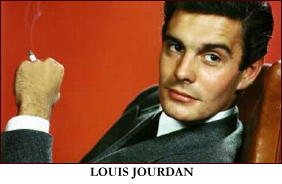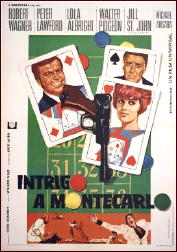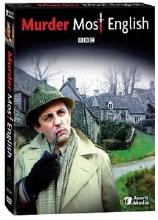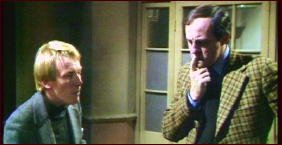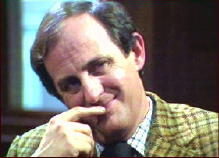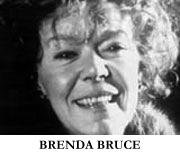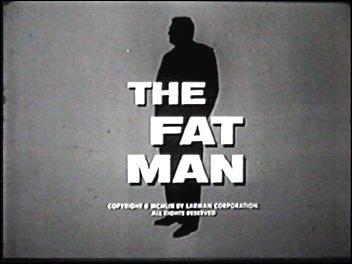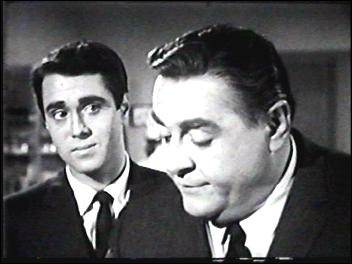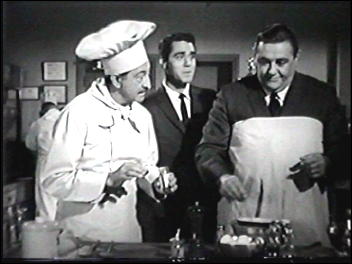FIRST YOU READ, THEN YOU WRITE
by Francis M. Nevins
I was nine years old in 1952 when my parents bought their first TV set. Being a little young at the time, I never watched what was perhaps the leading crime-drama anthology series of the early Fifties, CBS-TV’s Suspense, which had been heard on radio for almost a dozen years and debuted on the small screen early in 1949.
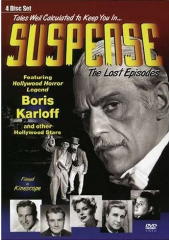
Just recently, however, I’ve begun to catch up, thanks to the release of three DVD sets containing several dozen episodes, including some of the earliest.
One of these, “Help Wanted” (June 14, 1949), was based on “The Cat’s-Paw,” the second published short story of the soon to be legendary Stanley Ellin (1916-1986),which had just appeared in the June 1949 issue of Ellery Queen’s Mystery Magazine.
A few evenings ago I ran this episode and then re-read the story. Both deal with a middle-aged unemployed loner named Crabtree to whom an anonymous party offers $50 a week (a generous salary in those days) to sit in a tiny office on the top floor of a skyscraper, eight hours a day six days a week, and compile useless financial reports.
Later Crabtree’s benefactor pays him a visit and offers him life tenure, as it were, if he’ll push his next visitor out the office window. Here is where Ellin and the writers of the TV version (Mary Orr and Reginald Denham) part company. In the story Crabtree follows through, although offstage (because Ellin almost never shows an act of violence), and gets away with it because his employer has made the death look like suicide.
On the air, whose censors looked askance at unpunished crimes, the visitor falls out of the window accidentally because of his paranoid fear of the office cat, and the intended murder is impliedly brought home to Crabtree’s Iago because the victim was the wrong man, not a blackmailer but a harmless crackpot soliciting money for a campaign to bring back Prohibition.
Otto Kruger played Crabtree, and Douglas Clark-Smith, who gives the impression of having been drunk on camera, was “Mr. X”.
This live drama, directed by Robert Stevens, was the first of at least fifteen live or filmed TV adaptations of Ellin stories. The same tale, translated to film with the same title and a script based on this one, later became the basis of an episode of Alfred Hitchcock Presents (April 1, 1956), with John Qualen and Lorne Greene in the roles of Crabtree and his employer and James Neilson directing.
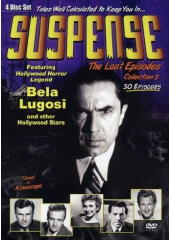
Also on Disc One of Collection One from Suspense is “The Murderer” (October 25, 1949), based on Joel Townsley Rogers’ often anthologized short story of the same name (Saturday Evening Post, November 23, 1946).
The story begins just after dawn on a lonely meadow, probably in the same general area where so much of Rogers’ powerful suspense novel The Red Right Hand (1945) was set. Farmer John Bantreagh discovers the dead body of his sluttish wife, knocked unconscious and then deliberately run over by a car.
Then deputy Roy Clade drives up, and the dialogue between the men heightens our suspicion that Bantreagh himself is the murderer. These two are the only onstage characters in Rogers’ story.
In the Suspense version, directed by Robert Stevens from a Joseph Hayes teleplay, Jeffrey Lynn and John McQuade played Bantreagh and Clade but there are also several other characters who in Rogers’ story were only referred to in the dialogue.
This tale was never adapted for Alfred Hitchcock Presents but did become the basis of a later live version on ABC’s Star Tonight (March 17, 1955), with Bantreagh and Clade played by Charles Aidman and Buster Crabbe.
During my three years at NYU Law School I watched very little TV, but in the fall of 1967, when I was still living in Greenwich Village and waiting for the results of the bar exam (yes, I passed), a new series debuted on ABC which, with its tension and its reflection of the turbulence of the Vietnam and Black Power years and its abundant action scenes shot on the streets of New York, captivated me instantly.
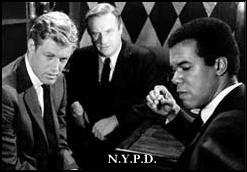
N.Y.P.D., starring Jack Warden as tough detective lieutenant Mike Haines, Robert Hooks as black plainclothesman Jeff Ward and Frank Converse as newbie Johnny Corso, was directed and scripted for the most part by veterans of the golden age of live teledrama and lasted two full seasons.
Looking over the cast lists recently, I was amazed at the number of actors then based in New York who appeared in one or more episodes and went on to household-name recognition and in some cases superstardom.
In alphabetical order and limiting myself to males: John Cazale, James Coco, William Devane, Charles Durning, Robert Forster, Vincent Gardenia, Charles Grodin, Moses Gunn, James Earl Jones, Harvey Keitel, Tony LoBianco, Laurence Luckinbill, Al Pacino, Andy Robinson, Mitchell Ryan, Roy Scheider, Martin Sheen, Jon Voight, Sam Waterston, Fritz Weaver.
Fewer female cast members made it big, but among those that did were Jill Clayburgh, Blythe Danner and Nancy Marchand.
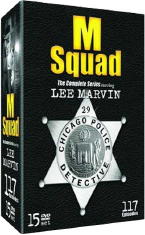
None of these names were familiar to me 40-odd years ago except James Earl Jones, whom I’d seen in an off-off-Broadway production of Othello, but today they’re instantly recognizable by millions. Why this superb series hasn’t been revived on DVD is a mystery; the fact that it hasn’t is a shame.
Speaking of vintage TV cop shows, M Squad, starring Lee Marvin, is now available on DVD, the complete 115-episode series for around $120. That’s pretty steep even if you buy the set with a 40% Borders Rewards discount coupon, but many who were teens during its first run as I was will be sorely tempted.
